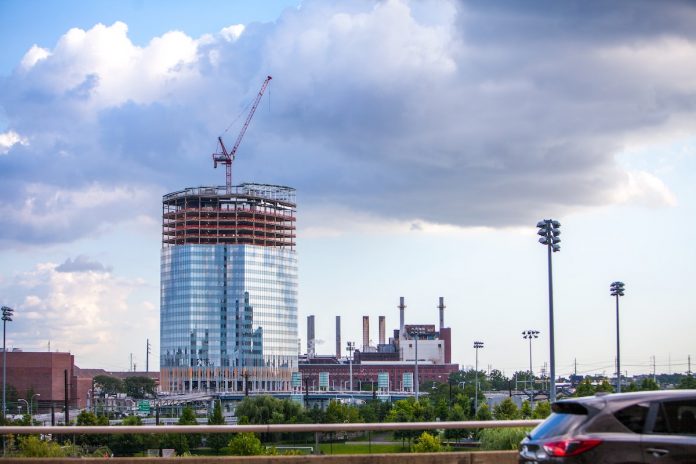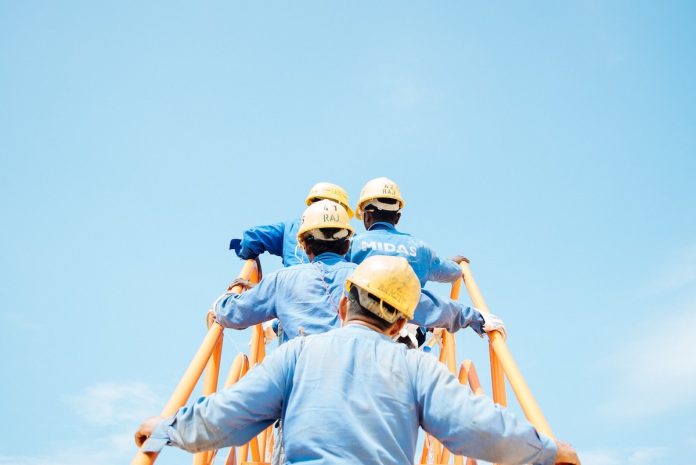Scaffolding or Ladder: Which is Safer for DIY Projects?
What is scaffolding?
Scaffolding, also known as scaffolding or staging, is a temporary framework that is used to support a work crew and materials during the construction, maintenance, and repair of buildings, bridges, and other man-made structures. Scaffolds are commonly utilized on construction sites to get access to high points and regions that would otherwise be inaccessible. Unsafe scaffolding has the potential to kill or seriously injure people. Scaffolding is also used for formwork and shoring, grandstand seating, concert stages, access/viewing towers, exhibition stands, ski ramps, half pipes, and art projects in various configurations.
Types of scaffoldings
There are six main types of scaffolding used worldwide today.
- Tube and coupler (fitting) components
- Prefabricated modular system scaffold components
- H-frame / façade modular system scaffolds
- Suspended scaffolds
- Timber scaffolds
- Bamboo scaffolds
Components of scaffolding
- A load-bearing base for the scaffold, such as a base jack or plate.
- The upright component with connector joins is the standard.
- A horizontal brace is the ledger.
- The transom is a load-bearing horizontal cross-section component that holds the batten, board, or decking unit.
- Brace diagonally and/or cross-sectionally.
- The working platform is constructed using battens or board decking.
- A coupler is a fitting that connects two components.
- Scaffold tie, which is used to secure the scaffold to structures.
- Brackets are used to increase the breadth of work platforms.
What is a ladder?
A ladder is a vertical or slanted arrangement of rungs or steps used for ascending or descending. There are two types: rigid ladders that are self-supporting or can be leaned against a vertical surface like a wall, and rollable ladders that can be suspended from the top, such as those made of rope or aluminum. Stringers, rails, and stiles are the vertical parts of a rigid ladder. Rigid ladders are often portable; however, some are permanently attached to a structure, building, or piece of equipment. They are often composed of metal, wood, or fiberglass, but durable plastic has also been used.
Which is safer: scaffolding or a ladder?
In general, scaffolding is safer than a ladder for DIY projects. Scaffolding provides a more stable platform to work from and allows for greater freedom of movement. Additionally, scaffolding is less likely to tip over than a ladder.
Here is a more detailed comparison of the safety of scaffolding and ladders:
Scaffolding:
Pros:
- Easy Accessibility: One of the key advantages of pursuing this procedure is its ease of accessibility. As a result, there are fewer types of disruptions, and it also helps to create a secure working environment. It is easy to create an integrated plan and ensures complete access to the entire space.
- Perfectly balanced: The scaffolding gives the workers a secure foothold. It assists workers in balancing themselves in various positions. Furthermore, it can also assist with certain functions and duties.
- Safety: One of the most notable benefits of scaffolding is how it may help increase productivity. It improves worker efficiency and makes the process secure and safe. Because building is a physically demanding task, this can aid in the creation of a better workplace.
- Assembling and dismantling: The scaffolds’ assembly and dismantling structures are basic and straightforward. As a result, this saves time and accelerates the procedure. It requires the least amount of time and effort to put up and take down. Consider this to be your primary scaffolding option.
- Long-Lasting: The most important benefit of this procedure is that the structure is long-lasting. It also provides various bridging sites, minimizing the distance that workers must travel. This saves your employees’ time and efforts. Because it is long-lasting, it assures that the process is safe and secure.
Cons:
- Be Aware of the Load: It is critical to be aware of the load because leaving things on the scaffold can be hazardous. As a result of the overload, it may fall off.
- Quality of Scaffold: Before using a scaffold, it is critical to inspect its quality. Make certain that you are not using broken or tempered platforms. Consult an expert to repair it or purchase a new one.
- Appropriately Assembled: If the instructions are followed, the assembly will be completed appropriately. Before employing scaffolding, workers must be thoroughly trained in its use.
Ladder:
Pros:
- Less expensive to rent or purchase
- Quicker to set up and take down
Cons:
- Less stable platform to work from
- Allows for less freedom of movement
- More likely to tip over
When to use scaffolding:
- Roofing: Scaffolding is essential for safely working on a roof. It provides a stable platform to stand on and allows you to move around freely.
- Painting: Scaffolding can be helpful for painting tall walls and ceilings. It also allows you to reach areas that would be difficult or impossible to reach with a ladder.
- Gutter cleaning: Scaffolding is a safe way to clean gutters, especially on multi-story homes.
- Tree trimming: Scaffolding can be used to safely trim tall trees. It provides a stable platform to stand on and allows you to reach all parts of the tree.

When to use a ladder:
- Changing a lightbulb: A ladder is a safe and easy way to change a lightbulb in a high-up fixture.
- Hanging a picture: A ladder can be used to hang a picture on a high wall.
- Washing windows: A ladder can be used to wash windows on a second-story home.
- Cleaning the gutters: A ladder can be used to clean gutters on a single-story home.
Here are some key factors to consider when choosing between scaffolding and a ladder:
- Height: Scaffolding is a better option for projects that require you to work at significant heights. Ladders can be dangerous at heights of more than 10 feet (3.05 m), as they can become unstable and tip over.
- Weight: Scaffolding is also a better choice for projects that involve carrying heavy loads. Ladders have weight limits, and overloading them can lead to accidents.
- Stability: Scaffolding is more stable than ladders, especially on uneven surfaces. This is important for projects that require you to move around a lot.
- Duration: Scaffolding is a better option for projects that will take several days or weeks to complete. Ladders can be tiring to stand on for long periods of time, and they can also be difficult to move around if you have to work on different areas of a project.
Safety tips for using scaffolding and ladders:
Here are some safety tips for using scaffolding and ladders:
Scaffolding:
- Make sure that the scaffolding is properly assembled and secured.
- Use a level to make sure that the scaffolding is level.
- Do not overload the scaffolding.
- Wear a safety harness when working on scaffolding.
Ladders:
- Place the ladder on a level surface.
- Make sure that the ladder is stable before climbing it.
- Face the ladder when climbing up and down.
- Keep your body centered on the ladder.
- Do not reach too far to the sides when working from a ladder.
- Use a ladder stabilizer if necessary.
Equipment rental
If you intend to use scaffolding or a ladder for a DIY project, you may want to consider renting the equipment from a rental company. This can be a suitable option if you do not own the equipment or if you only need to use it for a short period of time.
When renting equipment from a rental company, be sure to ask about the safety features of the equipment and how to use it safely. The rental company should also be able to provide you with instructions on how to assemble and set up the equipment.
Conclusion
In general, scaffolding is safer than a ladder for DIY projects. However, there are times when a ladder may be a more practical choice. It is important to weigh the risks and benefits of each option before choosing which one to use.







